Snowflake coloring pages offer a delightful opportunity to embrace the whimsical beauty of cold weather and unleash your creativity. Whether you’re seeking a relaxing pastime or an artistic outlet, these fun designs provide a canvas for you to explore the enchanting world of snowflakes. With their unique patterns and delicate details, snowflake coloring sheets captivate both children and adults alike, inviting you to immerse yourself in a serene and frosty wonderland.
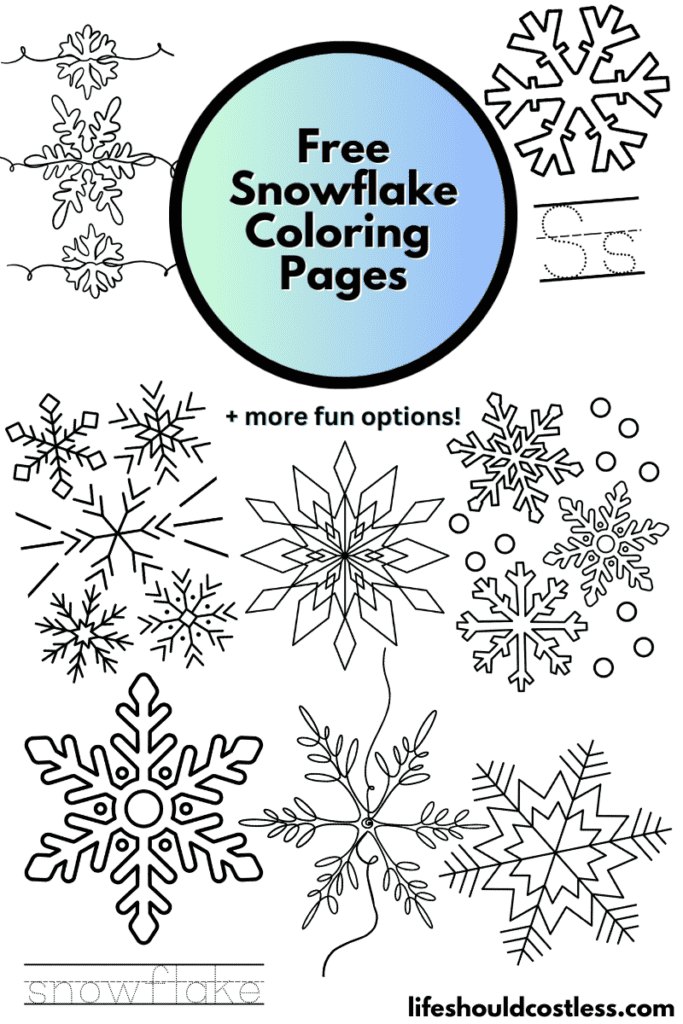
Feel free to choose any design that appeals to you, download the PDF template for free, print it, and indulge in coloring to your heart’s desire.
Alternatively, you can also utilize them as embroidery patterns or draw inspiration for delicate fine line tattoos.
Snowflake facts
For those who are unfamiliar with my coloring pages, it’s worth noting that I enjoy providing you with the opportunity to delve into the subject matter, allowing you to seamlessly transform it into an educational experience.
So, without further ado, let’s embark on this journey together!
Here are several fun and interesting facts about snowflakes (my reference source can be found here):
- Each snowflake is a unique work of art: Snowflakes are known for their intricate and delicate designs, and no two snowflakes are exactly alike. They form in a wide variety of shapes and patterns, making each one a tiny masterpiece.
- Snowflakes are made of ice crystals: Snowflakes are composed of ice crystals that form when water vapor freezes around a tiny particle, such as a speck of dust, in the atmosphere.
- Snowflakes have six-sided symmetry: Most snowflakes have a hexagonal or six-fold symmetry due to the arrangement of water molecules as they freeze. This symmetry contributes to their beautiful and symmetrical appearance.
- Snowflakes can have different shapes: While the classic image of a snowflake is a six-pointed star, snowflakes can actually take on various shapes, including columns, needles, plates, and dendrites (branched patterns).
- Snowflakes are formed in clouds: Snowflakes are born in clouds where the temperature is below freezing. Water vapor in the air condenses into ice crystals around microscopic particles to form snowflakes.
- The size of snowflakes varies: Snowflakes can range in size from tiny particles to larger flakes measuring several inches in diameter. The size of a snowflake depends on factors such as temperature and humidity.
- High humidity produces more complex snowflake shapes: In areas with high humidity, snowflakes tend to form more complex and intricate shapes due to the presence of more water vapor.
- Snowflakes can fuse together: When snowflakes fall and collide with each other, they can stick together, forming larger snowflakes or snow pellets known as graupel.
- Snowflakes can take different paths to the ground: Depending on the temperature and humidity levels in the atmosphere, snowflakes can take different paths as they fall to the ground, resulting in variations in their shapes and sizes.
- Snowflakes can be observed under a microscope: By capturing snowflakes on a cold surface and examining them under a microscope, scientists and enthusiasts can study their intricate structures and patterns in detail.
- The largest snowflake ever recorded was huge: According to the Guinness World Records, the largest snowflake ever observed fell in January 1887 in Fort Keogh, Montana, USA. It measured approximately 15 inches in diameter.
- Snowflakes can form in different temperatures: Contrary to popular belief, snowflakes can form at temperatures well below freezing.
- Snowflakes are not always white: While snowflakes appear white when they accumulate, they are actually translucent. The ice crystals scatter and reflect light, giving them a white appearance collectively.
- The study of snowflakes is called “snow crystallography”: Scientists who specialize in studying snowflakes and their formation use a branch of science called “snow crystallography” to examine their intricate structures and properties.
- Snowflakes inspired the invention of the camera flash: Wilson Bentley, a self-taught photographer, was the first person to capture detailed photographs of individual snowflakes in the late 19th century. His pioneering work with snowflakes led to advancements in microphotography and inspired the invention of the camera flash.
These fascinating facts about snowflakes highlight the wonder and complexity of these icy marvels, inviting us to appreciate their beauty and explore the science behind their formation.
However, there is much more to learn about them. If you would like to learn more, here are some other reputable resources:
- https://scied.ucar.edu/learning-zone/storms/snowflakes
- https://www.noaa.gov/stories/how-do-snowflakes-form-science-behind-snow
- https://www.britannica.com/video/188819/snowflakes
- To see all of my free printables, go here.
- To see an Alphabetized Index of all my coloring pages, go here.
- To see all of my nature and weather coloring pages, go here.
- To see my other Seasonal/Holiday-Themed coloring pages, go here.
- To see all of my Christmas coloring pages, go here.
Coloring tips
When it comes to coloring a picture of a snowflake, here are some tips and tricks to help you create beautiful and captivating designs:
- Start with a light touch: Begin coloring the snowflake with a light touch, especially if you’re using colored pencils or markers. Snowflakes are delicate, and starting lightly allows you to build up color gradually and maintain a sense of translucency.
- Utilize a variety of blues: Experiment with different shades of blue to capture the icy and cool essence of snowflakes. From pale blues to deeper blues, creating subtle gradients or blending different shades can add depth and dimension to your coloring.
- Add shimmer and sparkle: Consider incorporating metallic or glitter gel pens to add shimmer and sparkle to your snowflake. Adding a touch of silver or iridescent accents can make the design come alive and mimic the glistening effect of real snowflakes.
- Explore white-on-white techniques: Use white colored pencils, gel pens, or white acrylic paint to add intricate details and highlights to the snowflake. This technique can simulate the intricate patterns within the ice crystals and give the snowflake a frosty appearance.
- Experiment with background effects: Enhance your snowflake coloring page by creating a captivating background. You can try techniques like blending shades of light blue or adding subtle splatters of white paint to mimic falling snow.
- Embrace patterns and symmetry: Snowflakes often exhibit symmetrical patterns. Use this as an opportunity to play with symmetry in your coloring. Replicate the patterns on each arm of the snowflake to create balance and harmony.
- Play with different textures: Experiment with different coloring techniques to achieve various textures on your snowflake. For example, you can try cross-hatching, stippling, or blending to add depth and texture to different parts of the snowflake.
- Use reference images: Look at photographs or images of real snowflakes for inspiration. Notice the intricate details and patterns within the ice crystals and try to replicate them in your coloring. This can add realism and make your coloring page more captivating.
- Don’t be afraid to add a touch of color: While snowflakes are often associated with white and shades of blue, you can also add a hint of other colors to make your design unique. Consider adding subtle touches of purple, pink, or silver to create a magical and whimsical effect.
- Practice blending and layering: Experiment with blending different shades of blue together or layering colors to achieve a smooth and seamless look. This technique can add depth and richness to your snowflake.
Remember, the most important tip is to have fun and let your creativity guide you.
Each snowflake design is an opportunity to explore and create your own interpretation of these wondrous icy formations.
Enjoy the process and let your imagination sparkle!
Options For Printing:
Letter S is for snowflake writing practice worksheets
*My letter S is for snowflake coloring sheet printables are specifically designed to be used in a classroom setting, they are the only printable options on this page that do not need written permission to use in a public setting.
Please send the link to this post along if anyone asks you where you got them. Thank you!
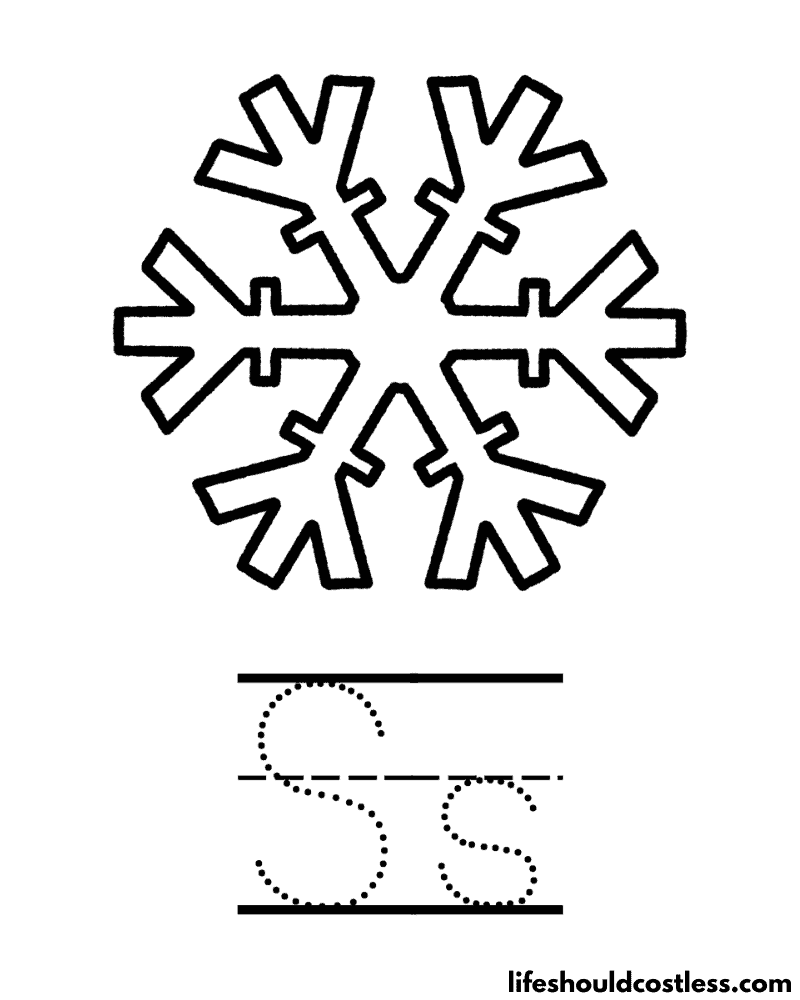
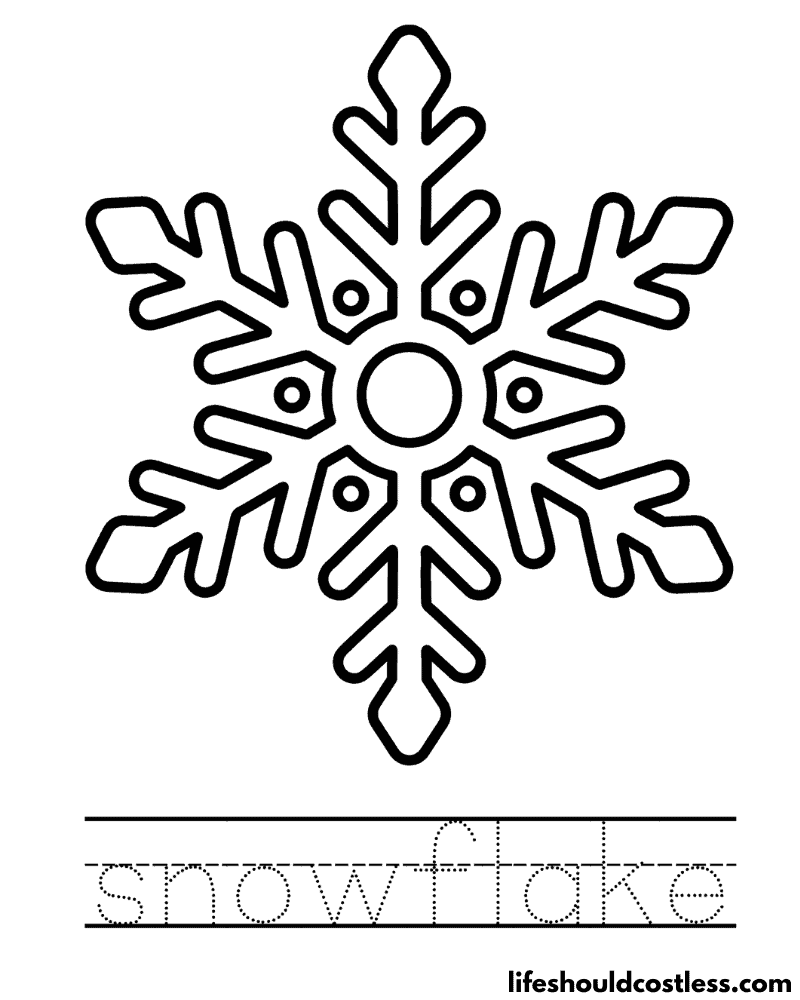
Various Snowflake Patterns
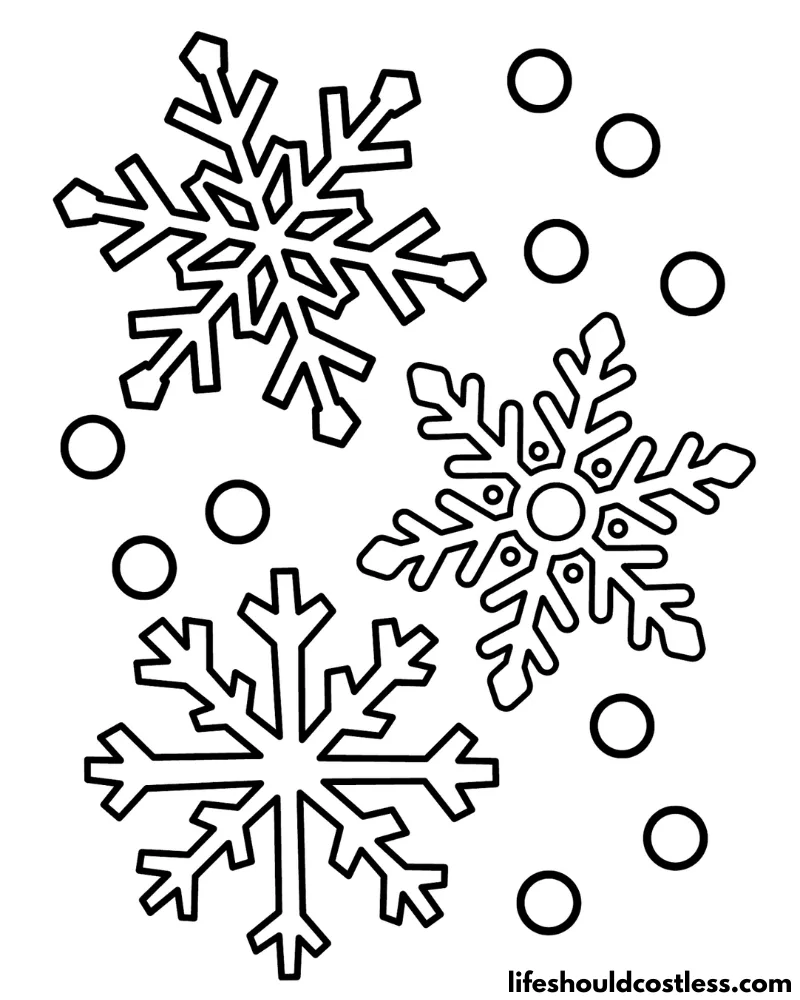
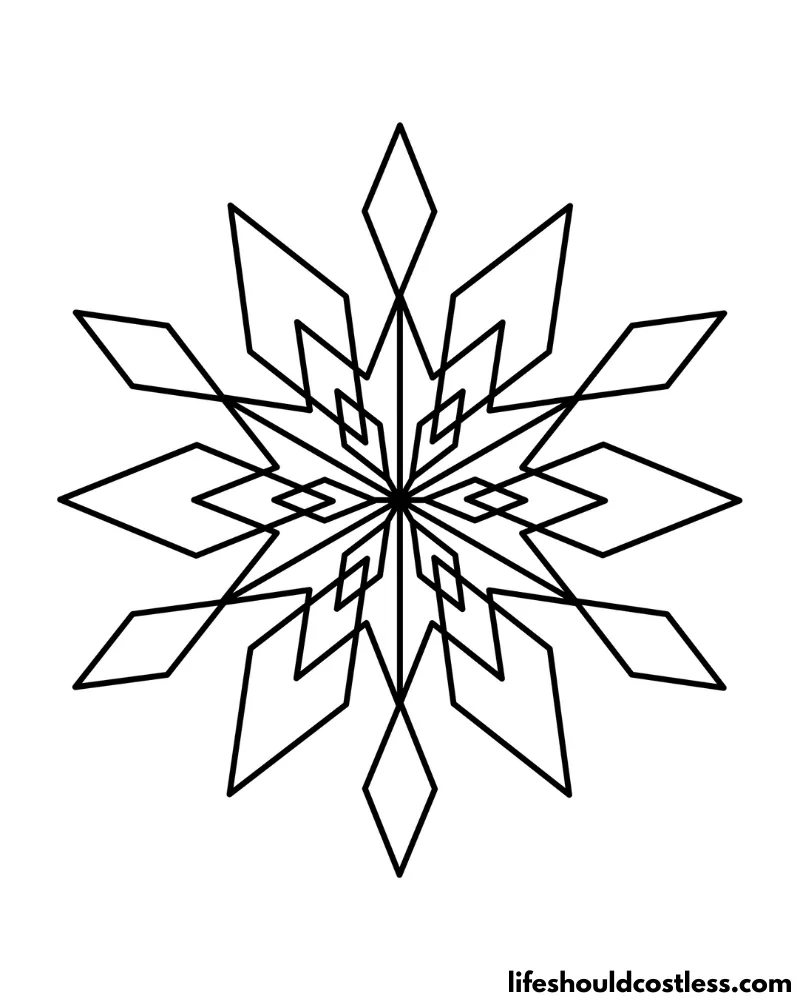
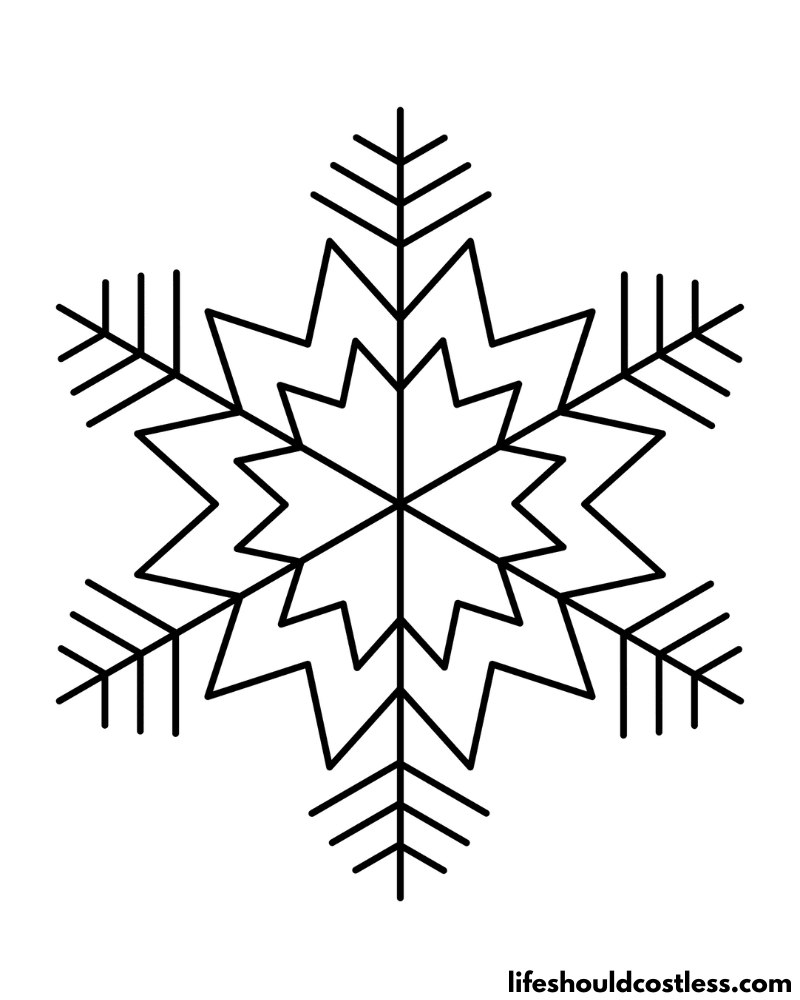

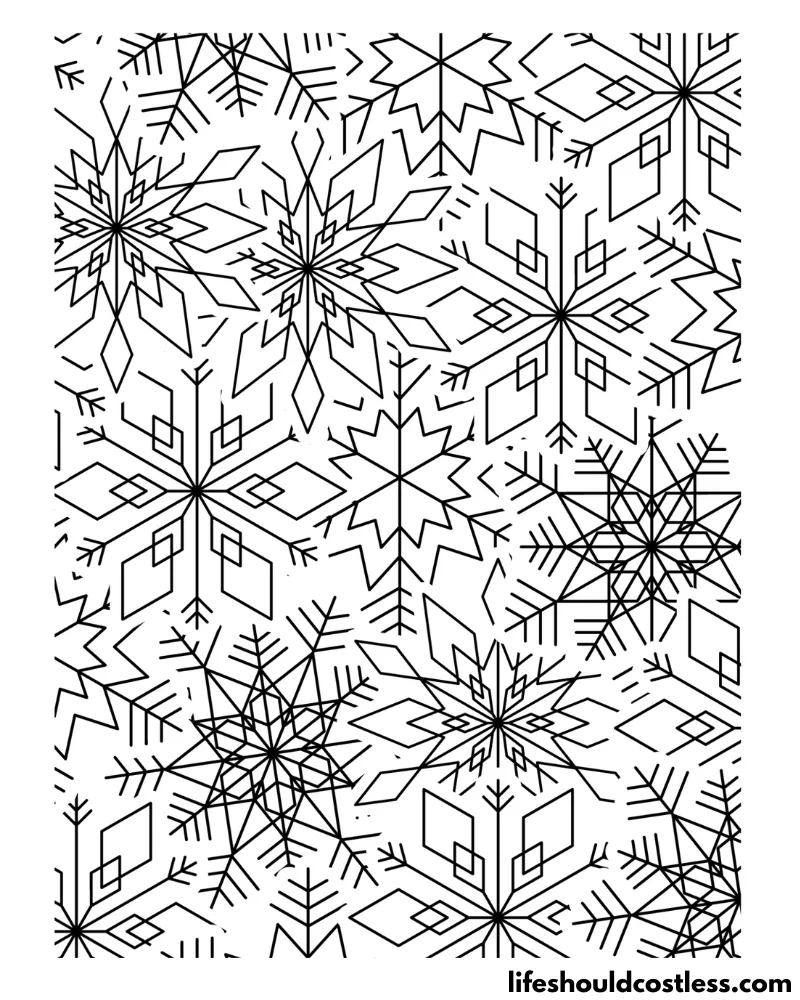
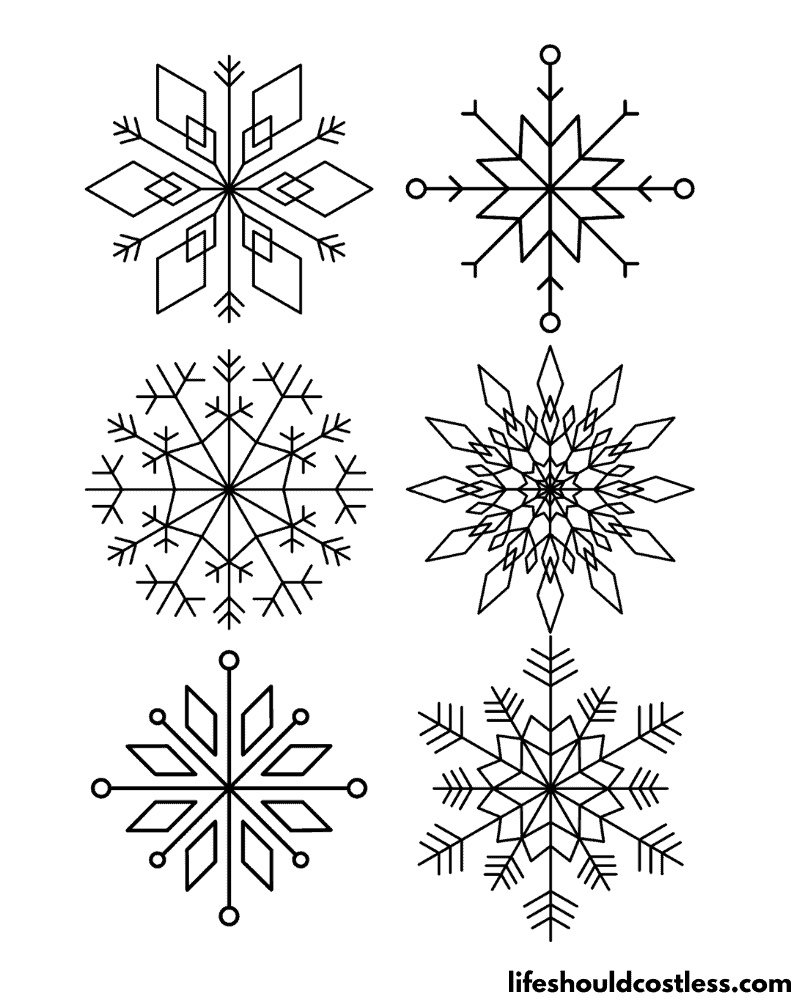
Snowflake Doodles
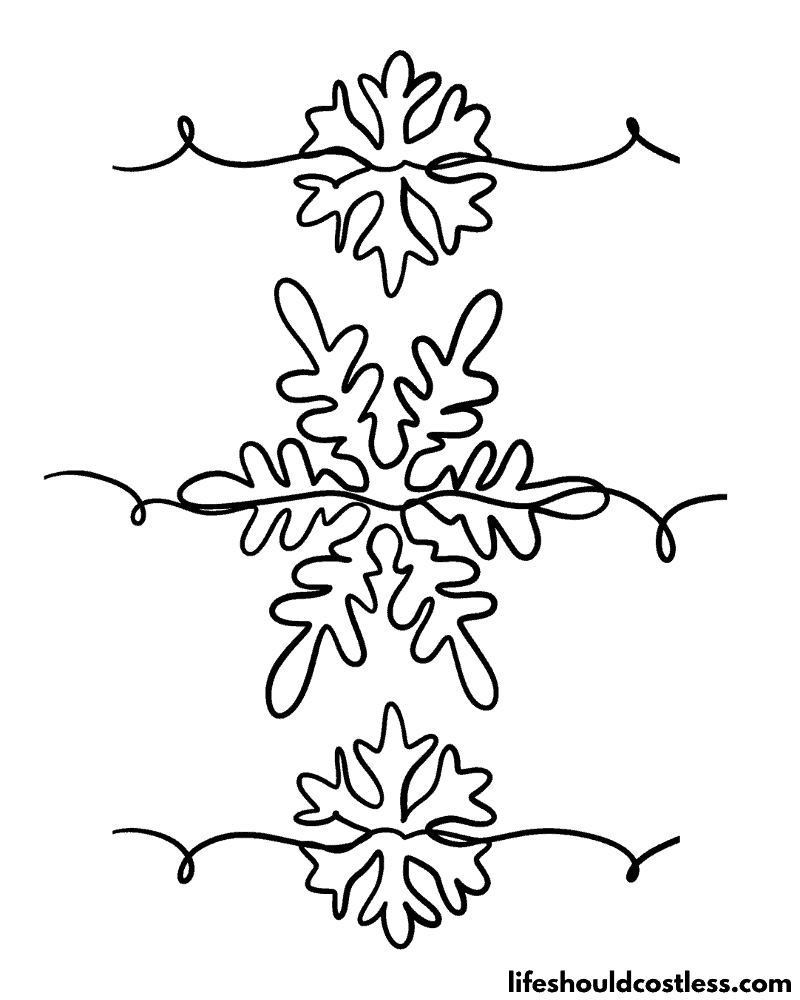
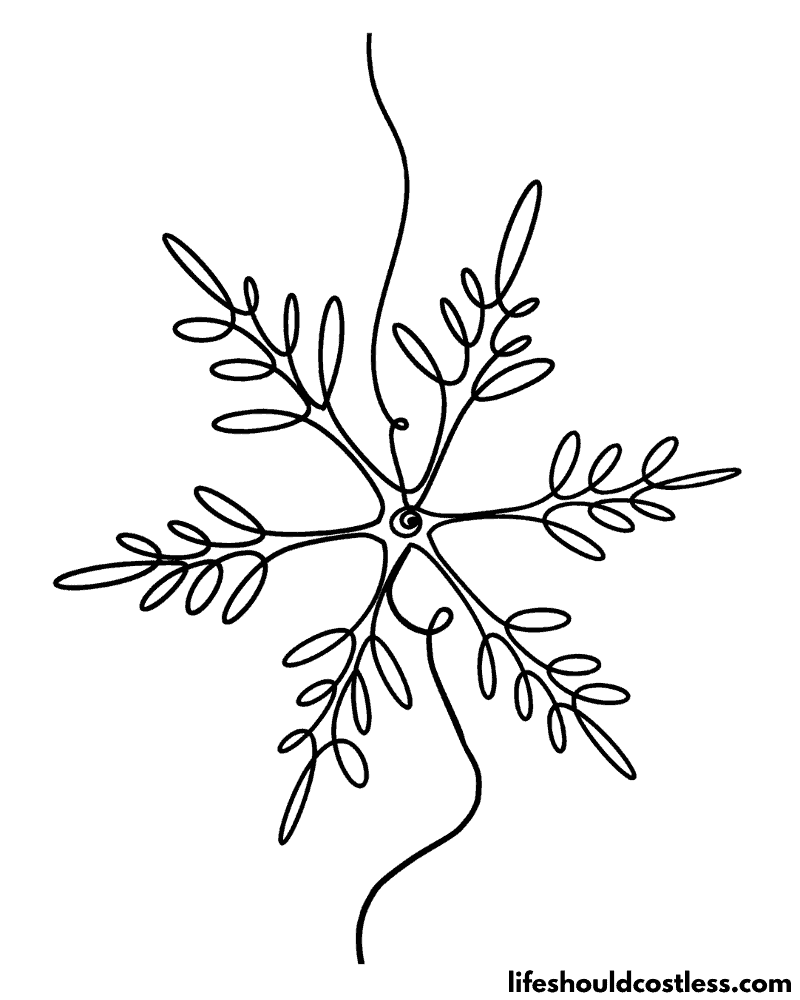
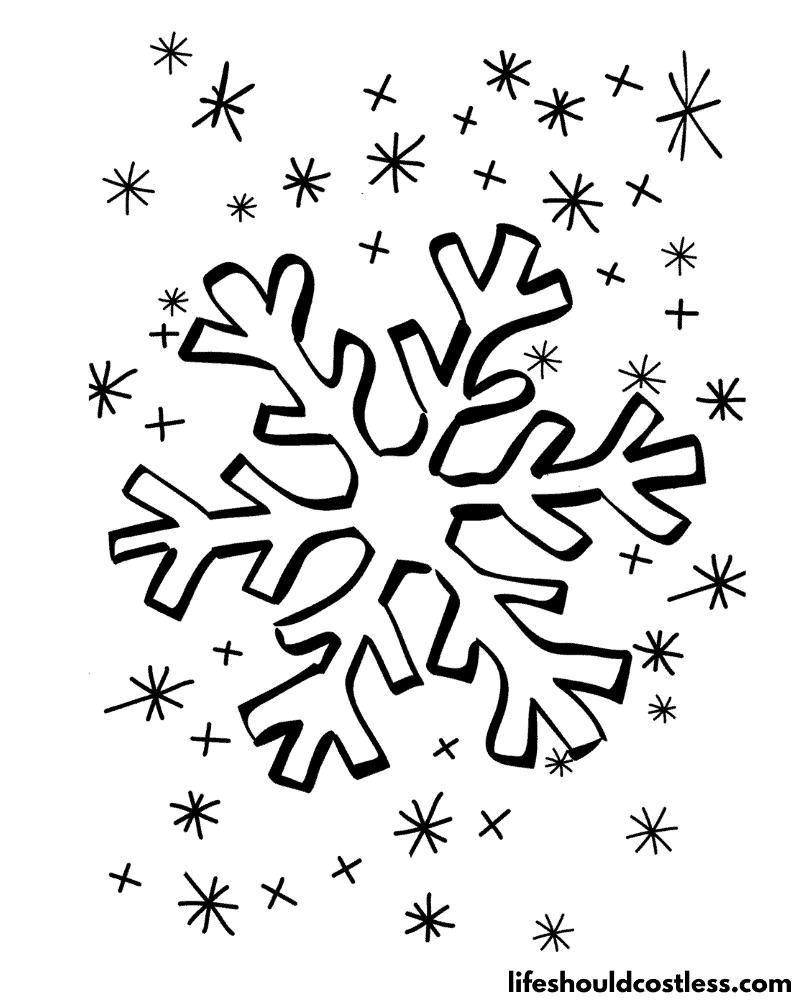
FAQ’s
Snowflakes themselves are actually colorless and translucent. The ice crystals that make up a snowflake scatter and reflect light, giving them a white appearance when they accumulate in large quantities.
However, when looking at individual snowflakes, they can appear slightly blue or have a faint hue due to the scattering of light. This bluish tint is a result of the way light interacts with the ice crystals.
Additionally, if the snowflake is viewed under certain lighting conditions or against a colored background, it may appear to take on the color of its surroundings.
Snowflakes themselves are not inherently blue. They are actually colorless and transparent. However, under certain conditions, snowflakes can appear to have a bluish tint. This bluish hue is a result of the way light interacts with ice crystals.
When light passes through the intricate structure of a snowflake, it undergoes a process called scattering, where shorter wavelengths of light (such as blue) are scattered more than longer wavelengths (such as red).
As a result, some people perceive snowflakes as having a slight blue color. However, it’s important to note that this bluish tint is very subtle and not uniformly present in all snowflakes.
*I will add more snowflake colour / color questions and answers as the questions get sent to me.
In conclusion, exploring the enchanting realm of snowflake coloring pages offers a captivating artistic journey that transcends the bounds of seasons.
With their intricate designs, delicate beauty, and unique patterns, these coloring pages provide a canvas for imaginative expression and a gateway to discovering the mesmerizing world of snowflakes.
Whether you’re seeking a tranquil pastime, a chance to learn about the science behind these icy wonders, or simply a creative outlet, coloring snowflakes offers a captivating experience for individuals of all ages.
So grab your coloring tools, let your imagination take flight, and immerse yourself in the intricate splendor when coloring pictures of snowflakes, where each stroke breathes life into a miniature masterpiece of crystalline artistry.
Thanks so much for stopping by my blog and supporting my endeavors to make people’s lives a little easier/better/more affordable.
If you liked this post, or found it helpful in any way, please make sure to share it with your family, friends, and co-workers via social media.
Or you could even send them the direct link via email. Whichever way you choose to spread the love, I super appreciate it! ~Sarah
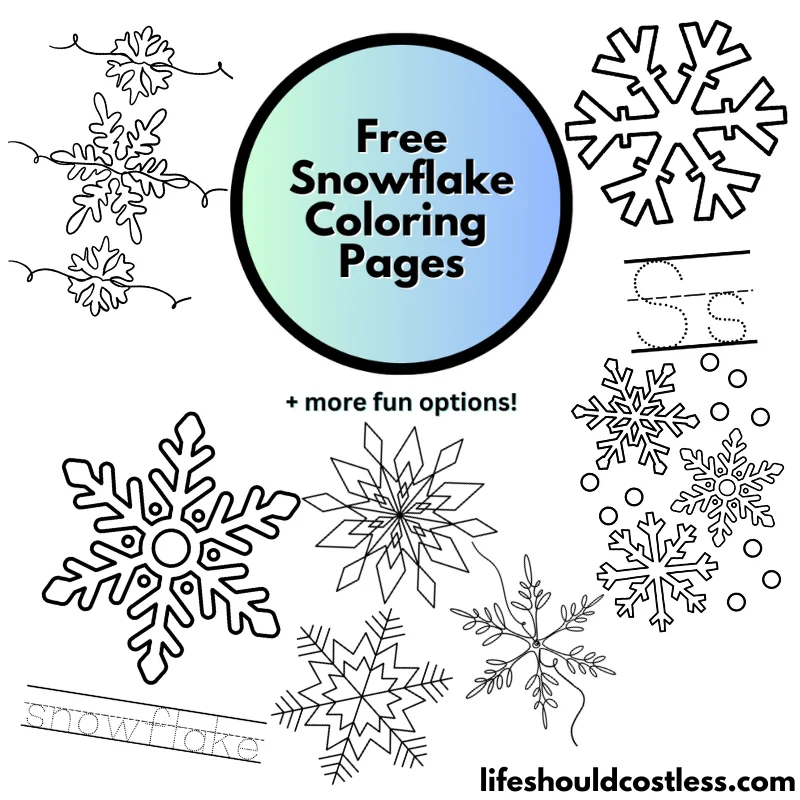
How To Follow & Support This Site
- If you would like to subscribe to my email list, go here.
- Make sure to follow along via social media, by going here.
- If you would like to learn how to really show your support to this site (at no cost to you), go here.
- If you would like to make a direct donation to the site, go here.
Check out my other free printables
- To see all of my free printables, go here.
- To see an Alphabetized Index of all my coloring pages, go here.
- To see all of my nature and weather coloring pages, go here.
- To see my other Seasonal/Holiday-Themed coloring pages, go here.
- To see all of my Christmas coloring pages, go here.
Otherwise, here are direct links to several of my other related posts that you’re also going to love:
Nature & Weather
Winter Coloring Pages
Christmas
New Years
St. Patrick’s Day
Valentine’s Day
Spring coloring pages
Easter
Other good resources for printable snowflakes
- https://clipart-library.com/snowflake-coloring-page-free.html
- https://funfamilycrafts.com/printable-snowflake-coloring-pages/
- https://www.cleanpng.com/free/snowflake-coloring-pages.html
*This post was originally shared to this blog on 06/28/2023, and has since been updated to improve user experience, add video instruction, as well as to make it as shareable as possible across the social medias.
**Please note that I do try my hardest to provide factual, but easy to understand, information about each topic. If you notice a discrepancy in my coloring pages, facts, or see something that you deem “misinformation/incorrect” please make sure to notify me about it. I would prefer that you send me an email with a link to a more reputable resource on that subject, so that I can correct it as soon as possible. Thanks so much for helping this site become the best that it can be!
***Resources from djinkers were used in the production of this article.
